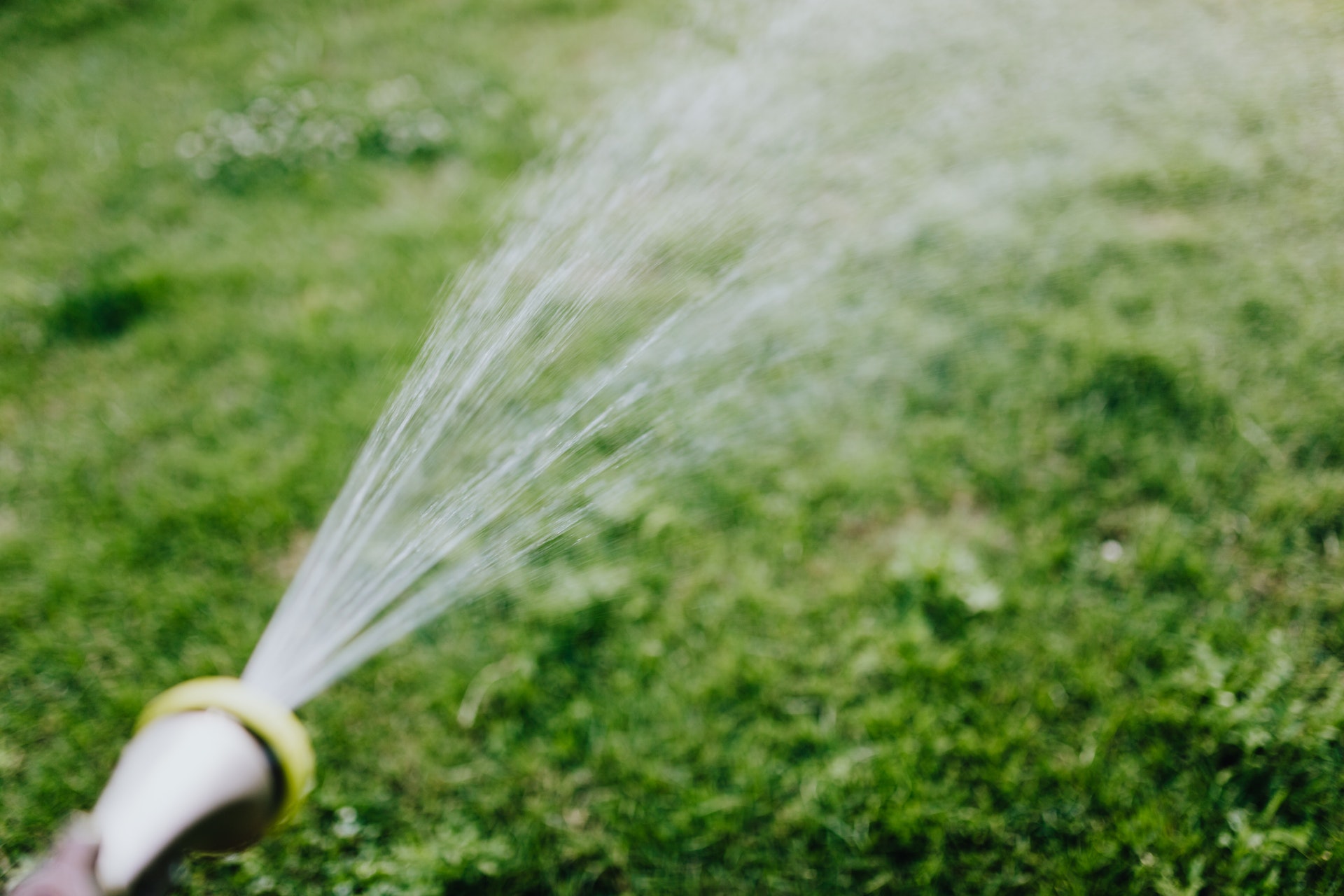Your home’s exterior speaks volumes about your property, and a large part of that first impression comes from the condition of your lawn. Whether for personal satisfaction or increasing curb appeal for a potential home sale, lawn care is crucial to maintaining your property. It improves the aesthetic appeal of your home, enhances the air quality, and can even increase property value.
With many grass varieties available, selecting the right one for your lawn can be challenging. The grass variety you choose must be aesthetically pleasing and match your local climate, soil type, and maintenance capability. Bermuda grass stands out among these varieties due to its resilience, attractive appearance, and relatively low maintenance needs.
Bermuda Grass: Overview and Characteristics
Bermuda grass, scientifically known as Cynodon dactylon, is a popular choice for lawns in warmer climates. This grass variety is known for its exceptional heat tolerance and ability to withstand heavy use, making it perfect for areas with warm tropical climates. It is a robust, fast-growing grass that forms a dense, carpet-like coverage, providing a lush green lawn during its peak growth periods.
Characterized by its fine to medium texture and dark green color, Bermuda grass is not only used for residential lawns. Still, it is also a preferred choice for golf courses, sports fields, and public parks. With its ability to quickly recover from damage and resist pests and diseases, it’s no surprise that Bermuda grass has become a favorite among professional turf managers and homeowners alike.
In this guide, we will delve deeper into everything you need to know about Bermuda grass – from its origin and benefits to the best practices for planting, maintenance, and troubleshooting. Whether you’re a homeowner with a new lawn or an experienced gardener looking for tips, this comprehensive guide to Bermuda grass care has got you covered.
Bermuda grass, despite its name, did not originate in Bermuda. It’s native to the African savanna and was introduced to North America and other parts of the world for its excellent ground cover and forage qualities. Its resilience, ability to thrive in warmer climates, and tolerance to frequent mowing quickly made it famous for use in lawns, sports fields, and golf courses. Today, it’s widely grown in the Southern United States and other warm regions worldwide.
Key Features and Benefits of Bermuda Grass
- Heat Tolerance: Bermuda grass thrives in full sunlight and can withstand high temperatures, which makes it an excellent choice for lawns in warmer climates.
- Drought Tolerance: Bermuda grass exhibits strong drought tolerance once established. It can survive extended dry periods by going dormant. It will return to its lush green state when adequate water becomes available.
- Traffic Tolerance: Bermuda grass can withstand heavy foot traffic thanks to its rapid growth and recovery rate. This is why it’s often chosen for sports fields and other high-traffic areas.
- Pest and Disease Resistance: Bermuda grass naturally resists many common lawn pests and diseases, reducing the need for chemical treatments.
- Versatility: Besides being used for home lawns, Bermuda grass is suitable for parks, golf courses, sports fields, and pastures.
Ideal Growing Conditions for Bermuda Grass
Bermuda grass flourishes in various soil types but prefers well-drained soils with a pH between 6.0 and 7.0. It requires at least 6 hours of direct sunlight daily and temperatures between 75°F and 99°F for optimal growth. While it can tolerate some shade, its growth will be less vigorous in shaded areas. As for water requirements, Bermuda grass needs about 1 to 1.25 inches of water per week during its growing season, whether from rainfall or irrigation.
In the subsequent sections, we will discuss the specifics of planting and maintaining a healthy Bermuda grass lawn. Whether starting from scratch or revamping an existing yard, properly caring for Bermuda grass is critical to achieving a lush, green lawn.
Factors to Consider When Choosing Bermuda Grass
While Bermuda grass has many advantages, it’s crucial to consider several factors before deciding if it’s the right choice for your lawn:
- Climate: Bermuda grass thrives in regions with warm, tropical climates. If you live in a colder region, Bermuda grass might not be the best option as it goes dormant and turns brown during colder months.
- Sunlight: Bermuda grass needs ample sunlight to grow well. If your lawn area is predominantly shaded, consider other grass varieties that are more shade-tolerant.
- Soil Type: Bermuda grass can adapt to various soil conditions but prefers well-drained soils with a neutral pH. Consider testing your soil before planting.
- Maintenance: Although Bermuda grass is relatively low maintenance, it still requires regular watering, mowing, and fertilizing for optimal appearance and health. Make sure you’re ready for this commitment.
Different Varieties of Bermuda Grass
There are several varieties of Bermuda grass, each with its unique characteristics. Some of the most common include:
- Common Bermuda: This is the most widely grown variety. It’s highly drought-resistant and can be grown from seed.
- Hybrid Bermuda: This includes varieties like Tifway and Tifgreen. They are typically lush and disease-resistant than common Bermuda. Still, they must be grown from sod or sprigs as they do not produce viable seeds.
- Celebration Bermuda: Known for its dark blue-green color, Celebration Bermuda has good shade tolerance compared to other varieties.
- Princess 77: This variety is famous for its fine texture and beautiful dark green color. It’s often used on golf courses and sports fields.
Preparing Your Lawn for Bermuda Grass
Before planting Bermuda grass, preparing your lawn to ensure the best possible growth is vital. Here are the steps to follow:
- Soil Testing: Test your soil’s pH and nutrient levels. This will guide you in amending your soil if necessary.
- Soil Preparation: Clear the area of weeds and debris. If necessary, amend the soil based on your soil test results.
- Leveling: Ensure the area is well-leveled to avoid water pooling in certain areas.
The following section will delve into the planting process and help you understand how and when to plant Bermuda grass for the best results.
When to Plant Bermuda Grass: Best Season and Weather
The ideal time to plant Bermuda grass is in late spring or early summer when soil temperatures are consistently above 65°F. This allows the grass to establish before cooler weather arrives. Avoid planting in late summer or fall, as the grass may not have enough time to develop before winter.
Choosing Between Bermuda Grass Seed, Sod, or Sprig
The method you choose to plant Bermuda grass depends on your specific needs and circumstances:
- Seeds: Planting Bermuda grass from seeds is the most cost-effective method. It’s a good choice for large areas or if you’re on a tight budget. Remember that it takes longer to establish a lawn from seed, and certain hybrid varieties don’t produce viable seeds.
- Sod: Sod is pre-grown Bermuda grass that you lay on your lawn. It’s more expensive than seeds but offers the advantage of an instant property. Sod is also less susceptible to erosion and can be planted virtually any time of the year, provided you water it adequately.
- Sprigs: Sprigs are Bermuda grass stems without roots. This method is typically used for hybrid varieties that don’t produce seeds. Sprigging is less expensive than sod but more labor-intensive and takes longer to establish than sod.
Proper Techniques for Planting Bermuda Grass
- Seeding: After preparing the soil, evenly spread the seeds across your lawn using a spreader. Lightly rake the area to cover the seeds with soil and water thoroughly.
- Sodding: Begin by preparing your soil, then lay the sod pieces end to end in a staggered pattern. Roll the sod to improve contact with the soil and water thoroughly.
- Sprigging: Dig shallow furrows in the soil and place the sprigs in the grooves, ensuring the leaves are above the ground. Cover the sprigs with soil, exposing the leaf blades and water thoroughly.
The establishment phase is crucial for your Bermuda grass lawn’s overall health and appearance. In the following sections, we will delve into how to care for your Bermuda grass lawn during the establishment phase and beyond to ensure it remains lush, green, and healthy.
Understanding Bermuda Grass Growing Cycle
Bermuda grass has a growing season from late spring through the hot summer months until early fall when temperatures are consistently above 60°F. Bermuda grass will require regular mowing, watering, and fertilizing during its growing season. In the cooler months, it goes dormant and turns brown but will green up again once temperatures rise.
Lawn Mowing: Optimal Height and Frequency
Maintaining the proper mowing height is crucial for Bermuda grass. Typically, it should be kept between 1 and 1.5 inches tall. Mowing regularly encourages Bermuda grass to grow laterally, creating a dense, carpet-like lawn. It also helps keep weeds in check.
During peak growing season, you might need to mow your lawn once or twice a week. Remember the “1/3 rule”: never remove more than 1/3 of the grass blade at a time to prevent stress on the grass.
Watering: Best Practices and Common Mistakes
Proper watering is critical for Bermuda grass. On average, Bermuda grass needs about 1 to 1.25 inches of water weekly. Deep and infrequent watering is preferable to light and frequent watering, as it encourages more profound root growth, making the grass more drought-tolerant.
Water your Bermuda grass lawn early in the morning to reduce water loss due to evaporation. Avoid overwatering, as it can lead to diseases and pests.
Fertilizing: Choosing the Right Fertilizer and Schedule
Fertilization promotes the lush and healthy growth of Bermuda grass. Bermuda grass prefers a balanced fertilizer that contains nitrogen, phosphorus, and potassium.
Fertilize Bermuda grass at the start of its growing season, usually in the late spring or early summer, and then every 4-6 weeks during the growing season. Avoid fertilizing Bermuda grass when it’s dormant, as the grass cannot utilize the nutrients and can contribute to water pollution.
Weed Control: Preventing and Controlling Weeds
To control weeds in your Bermuda grass lawn, maintain healthy grass with proper mowing, watering, and fertilizing. You can also use pre-emergent herbicides in early spring before weed seeds germinate. If weeds do appear, post-emergent herbicides can be used, or they can be manually removed.
Disease and Pest Control: Identifying and Managing Common Threats
Bermuda grass is generally resistant to most pests and diseases. However, problems can still arise due to overwatering, poor drainage, or extreme weather conditions. Common pests include armyworms, cutworms, and mole crickets. Diseases can have a dollar spot, leaf spot, and spring dead spot.
It’s essential to identify and address any issues early. Adjusting your watering practices or applying a suitable fungicide or pesticide can help control these problems.
Understanding how to properly maintain your Bermuda grass lawn can significantly affect its health and appearance. The following section will explore how to troubleshoot common Bermuda grass problems.
Dealing with Common Bermuda Grass Diseases
- Dollar Spot: Identified by small straw-colored spots on the lawn, Dollar Spot can be managed by regular mowing and watering, maintaining proper soil pH, and applying a fungicide if necessary.
- Leaf Spot: Characterized by dark reddish-brown spots on grass blades, Leaf Spot can be controlled by reducing excess moisture on the lawn, aerating the soil, and applying fungicides when needed.
- Spring Dead Spot: This disease causes circular patches of grass to die in the spring. It can be prevented by reducing nitrogen applications in the fall, improving drainage, and using a fungicide in the autumn months before dormancy.
Overcoming Invasive Weeds and Pests
Invasive weeds like crabgrass, dandelions, and clover can out-compete Bermuda grass for nutrients, light, and space. Regular mowing, proper watering, and the use of pre-emergent and post-emergent herbicides can control these weeds.
Pests such as armyworms, cutworms, and mole crickets can cause significant damage to your Bermuda grass lawn. Pesticides can be used as a last resort, as they can harm beneficial insects.
Addressing Common Nutrient Deficiencies and Their Symptoms
Bermuda grass can show signs of nutrient deficiencies, including yellowing leaves (nitrogen deficiency), reddish-purple leaves (phosphorus deficiency), or dark green veins on yellow leaves (iron deficiency). Soil testing can help identify which nutrients your lawn may be lacking, and applying a balanced fertilizer can correct these deficiencies.
Troubleshooting Bermuda grass problems can be daunting, especially for beginners. But you can keep your lawn healthy and vibrant with patience, regular care, and the willingness to learn. In the next section, we’ll look into how to care for your Bermuda grass during the winter months.
Winter Care for Bermuda Grass
In colder weather or when temperatures consistently drop below 60°F, Bermuda grass enters a dormant state, turning brown until warmer temperatures return. The grass is not dead during this period but conserves energy for the next growing season.
Preparing Bermuda Grass for Winter
To help your Bermuda grass survive the winter, prepare it in the fall by reducing the amount of nitrogen you apply and increasing potassium, which helps improve the overall hardiness of the grass. Also, be sure to water the lawn adequately before the first frost to provide the grass with enough moisture.
Overseeding Bermuda Grass for Winter Green
If you want a green lawn year-round, you can overseed your Bermuda grass lawn with a cool-season grass-like perennial ryegrass in the fall. The ryegrass will provide a green cover when the Bermuda grass goes dormant. Once temperatures rise in the spring, the Bermuda grass will naturally out-compete the ryegrass and reclaim the lawn.
Protecting Bermuda Grass from Winter Damage
Even in its dormant state, Bermuda grass can suffer from winter damage. Avoid walking on or mowing the grass while it’s frost-covered, as this can damage the grass blades. Also, be sure to clear any fallen leaves or debris from your lawn to prevent the creation of dead spots.
Taking care of your Bermuda grass during the winter months ensures that when spring arrives, your lawn will be ready to return to its lush, green state. The following section will provide some final thoughts and summarize the crucial points for successful Bermuda grass care.
Recap of Bermuda Grass Maintenance Practices
Due to its resilience and adaptability, Bermuda grass can make for a fantastic lawn choice, particularly in warmer climates. Remember these key points for successful Bermuda grass care:
- Planting: Bermuda grass can be planted via seeds, sod, or sprigs. Opt for late spring or early summer when soil temperatures are consistently above 65°F for planting.
- Mowing: Keep Bermuda grass between 1 and 1.5 inches tall during its growing season. Follow the “1/3 rule” to avoid stressing the grass.
- Watering: Bermuda grass needs about 1 to 1.25 inches of water per week, applied in deep, infrequent watering sessions to encourage more profound root growth.
- Fertilizing: Bermuda grass benefits from balanced fertilization every 4-6 weeks during its growing season.
FAQ: Bermuda Grass Care
Bermuda grass thrives in regions with a warm, tropical climate. It may struggle in colder areas due to its tendency to go dormant and turn brown when temperatures drop below 60°F.
Regular watering, proper mowing, and balanced fertilizer are crucial for maintaining a vibrant green color in Bermuda grass. During its active growth season, Bermuda grass may benefit from additional iron applications to intensify its green color.
Yes, Bermuda grass is drought-resistant. While it does require regular watering for optimal growth, it can survive periods of drought by going dormant until adequate water is available.
Thin and patchy Bermuda grass can result from several factors, including inadequate watering, incorrect mowing height, pest infestations, or nutrient deficiencies. Addressing these issues can help improve the density of your Bermuda grass.
Regular mowing, proper fertilization, and watering can prevent weed growth. If necessary, use pre-emergent herbicides in early spring before weed seeds germinate. Post-emergent herbicides can be used if weeds do appear.
While it’s possible to mow wet grass, it’s not recommended. Wet grass can clump and potentially clog your mower. It also tends to bend rather than stand upright, resulting in an uneven cut.
Conclusion
After reading this comprehensive guide, you should be equipped with all the knowledge you need to plant, maintain, and troubleshoot your Bermuda grass lawn. The steps may seem extensive, but with practice and patience, these practices will become a routine part of lawn care.
Remember, Bermuda grass is a resilient turfgrass that, when cared for properly, can provide you with a durable, attractive, and practical lawn. It thrives in warmer climates, handles traffic well, and can recover quickly from damage due to its aggressive growth. Whether playing catch with your kids, hosting a garden party, or simply admiring your property from your porch, your lush, green Bermuda grass lawn can be the perfect setting.
So why wait? Embark on your journey towards creating and maintaining a gorgeous Bermuda grass lawn. After all, your dream lawn is just a few steps away! Happy mowing!
Resources for Further Reading
For more detailed information on Bermuda grass care and other gardening topics, you might find these resources helpful:
Books on Bermuda Grass Care and Lawn Maintenance
- “Lawns: Your Guide to a Beautiful Yard” by Nick Christians and Ashton Ritchie
- “Scotts Lawns: Your Guide to a Beautiful Yard” by Scotts and Nick Christians
- “The Lawn Bible: How to Keep It Green, Groomed, and Growing Every Season of the Year” by David R. Mellor
Online Resources and Blogs
- University Extension Services: Many universities have extension services that provide free online resources, including articles and guides on lawn care and gardening.
- Lawn Care Nut (YouTube Channel): This channel offers practical advice on lawn care, including specific videos on Bermuda grass.
- Gardening forums and blogs: Websites like GardenWeb, The Lawn Forum, and others can be helpful resources where you can ask questions and share experiences with fellow gardeners.
Local Nurseries and Garden Centers
Local nurseries and garden centers can be an excellent resource for advice tailored to your region. They often have knowledgeable staff who can help answer your questions.
With these resources, you can continue expanding your knowledge and skillset in Bermuda grass care and lawn maintenance. Remember, every lawn is unique, and learning is a continuous journey.








